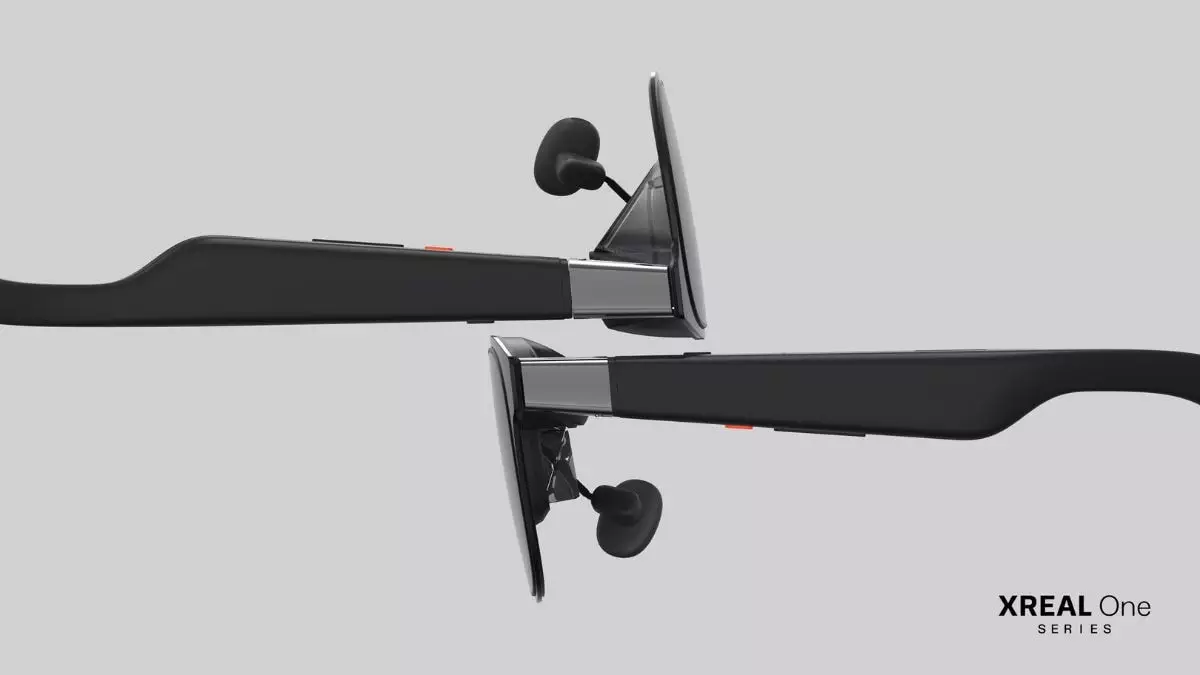The world of augmented reality (AR) recently welcomed an intriguing addition with the launch of the Xreal One series of AR glasses. Developed by a budding Chinese startup, this lineup boasts innovations that promise to advance the way users interact with digital content in their physical environments. Featuring two models—Xreal One and Xreal One Pro—these glasses are packing both technological sophistication and user-centric designs aimed at elevating the AR experience.
At the core of the Xreal One series is the newly developed X1 independent spatial computing chip. This innovative chip significantly enhances spatial screen control, allowing users to engage with virtual environments more fluidly. With the capability to deliver extraordinary visual outputs, the X1 chip is an attempt to push the proxy of how AR devices can operate. What stands out is not just the technology itself, but how Xreal integrates it into its glasses for seamless use.
The Xreal One model starts at $499 and the Pro model at $599, making them reasonably accessible when compared to competitor devices in the AR landscape. This pricing strategy could potentially attract a wider audience interested in exploring AR without committing to exorbitant costs. These models are available for pre-order across multiple international markets, a move that highlights the startup’s ambition to appeal to a global user base.
One of the most notable features of the Xreal One series is its optical performance. Thanks to a proprietary optical engine, users can expect visuals comparable to 1080p resolution for each eye and a generously wide field of view (FOV) of 50 degrees. Coupled with an impressive display area increase—20.7% larger for the base model and a striking 63.7% for the Pro—these specifications promise an immersive experience that could redefine the boundaries of AR applications.
Furthermore, the glasses offer an array of adjustable settings tailored for individual user preferences. With options for screen size, brightness, and even color temperature, this variety allows users to customize their visual experiences more profoundly than many existing AR products on the market.
The versatility of the Xreal One glasses extends beyond mere visuals. They’re designed for compatibility with a broad range of devices, including smartphones, PCs, and gaming consoles. Users can easily stream visuals into the AR glasses, which operate with a remarkably low motion-to-photon latency of just 3ms. This rapid response not only offers a more engaging experience but also underscores the technological prowess of the X1 chip.
With a prevention-focused approach in design, the AR glasses come with certifications ensuring a low blue-light and flicker-free experience, aiming to safeguard user health during prolonged use. Coupled with audio technology powered by Bose and a sophisticated microphone setup, the glasses are equipped to create a truly immersive multimedia experience.
Looking ahead, Xreal is promising more features through future updates. The upcoming multimodal capabilities will focus on enhancing user interaction through voice commands and image recognition—technologies that will usher in a new layer of convenience. This type of smart functionality is essential for bridging the gap between conventional user interfaces and immersive augmented environments.
Customization remains a significant theme in the Xreal One series. With a lightweight magnesium alloy chassis and modular components, users can not only personalize the look of their glasses but also adapt them for various tasks depending on their needs. The detachable RGB camera is a brilliant addition, enabling users to capture high-quality images and video—a functionality that could be invaluable for creatives and professionals alike.
The Xreal One series of augmented reality glasses appears poised to impact the AR landscape considerably. With advanced hardware, strong visual performance, and robust features, Xreal is establishing a foundation for the future of augmented experiences. As the glasses become available to consumers later this month and early next year, it will be exciting to see how this innovative technology shapes not just individual experiences, but the broader interaction between reality and augmented realities.


Leave a Reply